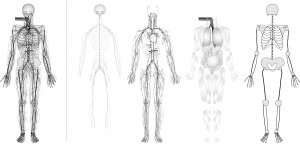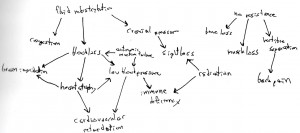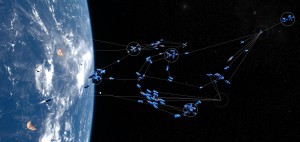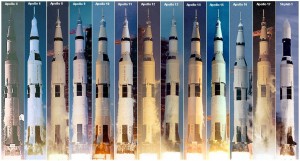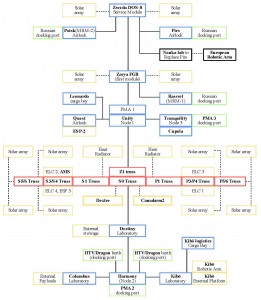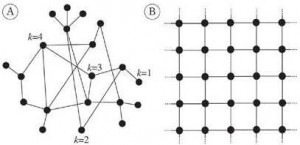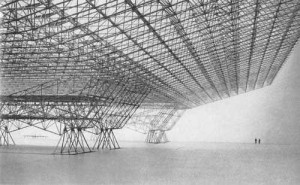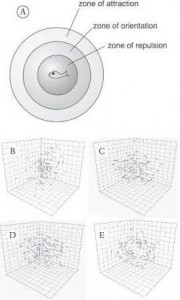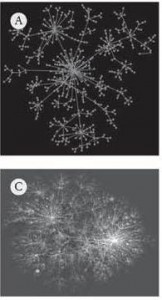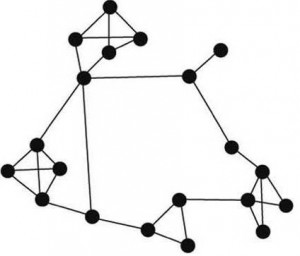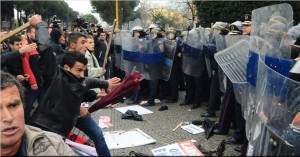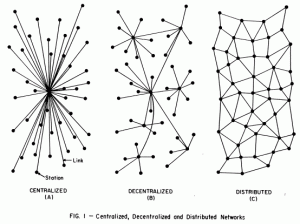When societal constructs are considered as networks, the notion of an interface becomes massively important. Be this between two simple elements within a larger web, or a junction where multiple ordered networks meet, interface links people, materials and information together across disparate organizations. My interest revolves around the architecture of this condition, and when one is asked to live on the boundary.
A recurrent theme is the condition when the inhabited boundary is the border to something powerful, potentially beneficial if controlled, but also dangerous. For a quick historical look, let’s consider the ocean as an example. For much of history, oceanic travel was dangerous, but potentially gainful. Ports of imperialism, trade, and exploration were complex mixes of cultures and materials. Look at the interface on the scale of a city, such as Venice, a city of extreme complexity, and undeniable reliance on the water, that mixes arts and cultures from all sides of the Mediterranean. Viewing oceanic harvesting on another scale, the example of the salt water farm can be raised, as a housing unit that behaves as a network within itself, working with land crops, fish harvests, and economic market pressures to create a complex business that still manages to house a family unit in relative comfort. Even down to the unit of a single fishing boat as an interface object between an individual and the ocean in a very direct and personal manner.
I find the inhabitation of this boundary condition to be massively important. As well as acting as a spime and facilitating important network interactions, an inhabitation unit on a boundary site, as an interface role, lends its residents a combination of universal understanding and sense of place. Imagine what the culture might be like in such a place.
Deployment of an interface architecture can happen over many resources. Interface architecture could sit on the border with oceans, foreign countries, bodies of natural or scientific resources, commodity supplies, bodies in space like planets and stars, and even more subtle network resources, like cities and their social networks, epidemiological systems, and interface with information networks.
This theme of interface is consistently present in many depictions of the future. Andromeda Strain is perhaps the most literal depiction of an interface architecture. The vast majority of the story explains the logistical and architectural constructs that are set up to handle something so tender as the interface with an alien viral strain. Other stories heavily rely on the architecture of interface as well: Blindsight carefully explains the custom-built spaceship and specially designated teams and layers of probes called to the task of investigating alien life. The inclusion of the Icharus Array is a secondary depiction of an interface system that connects the human space transport network with the Sun. Solaris looks at the interface between humans and the planetary intelligence in a complex manner. Choosing not to black-box human interest as a singular entity, or even the people sent to Solaris, the story considers the characters as networks, not objects, and plays out the interaction between the planet and the memories available on board the station. Dune can be understood as one big story of interface architecture, dealing closely with the interconnections between the varying groups and the source of power, the spice. The planet becomes the playing field for the vying interests of the Guild, the Bene Gesserit, the Emperor, the Atreides and Harkonnen houses, and the resident Fremen. Networks of politics and society intimately intertwine with the intricacies of the planet’s ecosystem, with the vying characters acting as mediums between.
I find contemporary airports to be fascinating models, as they act as links not just between two networks, but many, on many levels, and must maintain order throughout. A large international airport has to handle many layers of information: material (including passenger luggage and the security questions that accompany, commercial shipping that comes with tariffs and governmental controls, and biological control and containment), people (widely varying, including ambassadors, tourists, workers, illegals, spies, terrorists and criminals, employees, and even sometimes residents of the network), and flows of information, ideas and cultures crashing and mingling. Each airport is a gateway to not just one, but hundreds of foreign networks, that can be considered variably beneficial or hostile. Particularly revealing is the ways some individuals and groups manage to use the air network to their advantage, and the amount of regulation and organization each governing body puts into trying to control how things move into their space through this network. Terror organizations can hijack or threaten aircraft based on their destinations and predominant passenger demographic. Governments can use commercial flights to move spies in and out of countries posing as innocents from other countries. Refugees can accidentally or intentionally find themselves in limbo between state regulations (Edward Snowden being an example of recent note). This paints a picture of a network that is complex on many scales, including material, human, biological, political, and cultural, and this layered complexity manifests in airport architectures that are highly layered, segregated, and incomprehensible from a human scale. This complexity presents enormous potential for variation, evolution, and misappropriation in the system. The unfortunate downside of considering the airport as a model is its lack of residents.
Another way to consider this condition of the interface, is the example of the industrial town. Industry could be viewed as an interface with a commodity network, and the people who live and work between the commercial network and the world around can commonly find this experience victimizing. The industrial settlement has been of architectural interest for a very long time, designers drawing on the horrors of Manchester as cause for their radical utopian designs. Fourier, Cadbury, Krupp, Owen, Garnier, Le Corbusier, and others all designed their views of the industrial town. These towns commonly present paradoxes in considering them as interface networks. Early industrial cities commonly paid their workers low wages, such that the workers producing goods were hard pressed to acquire those very goods for themselves. Later approaches to the industrial town introduced a separation between the factory district and the residential district, sidelining the community as a participant in the transaction between the business and the larger society. Considering networks, this could have been an effort to simply avoid the enormous complexity involved in using the designed society as an active social and economic interface.
My issue becomes one of synthesizing the complexity of the airport network-interface model with inhabitation as an active component. A potential design outlet for this architecture could be a place where both housing and transit are necessary, such as a space station acting as a port between an interplanetary transportation and resource gathering network, and the social, material, and political networks on the planet below. This station would require an enormous resident staff population, and as an extension, could evolve into a new city environment, with the added complexity of the airport’s layered control systems. How can a compact living environment comfortably house people in a social setting, while still operating the systems of control and division that are necessary in an area of exchange, without black-boxing the local society as a side story?
The solution would have to be carried out on multiple scales, each adding layers to the boundary-city diagram. The first obvious scale would be the city itself, placed on the juncture between multiple networks of power and resource. Perhaps a second scale could consider the house (a move exemplified by Tony Garnier, who carefully considered the individual living situation in his urban plans), and the way it connects the societal unit living within to networks of society, information, food and other needs. The last possible scale could be down to the individual; a device or tool that facilitates the interface between that person and information networks (or the Singularity), and other necessities. This scale of interface may want to operate between massively disparate scales, connecting a global information network, with, say something as small within the individual as their bacterial components, or genetic information. Competing networks within the city could be addressed on multiple scales, but viewed as overlapping layers that form the drawing of the interface-city.
